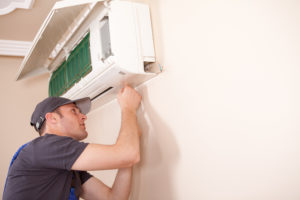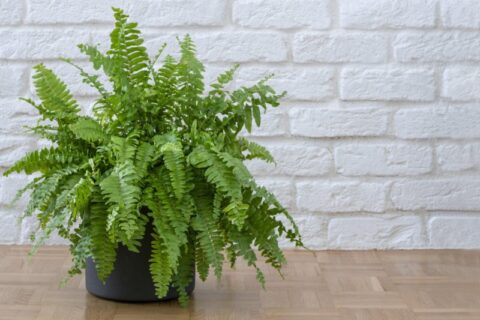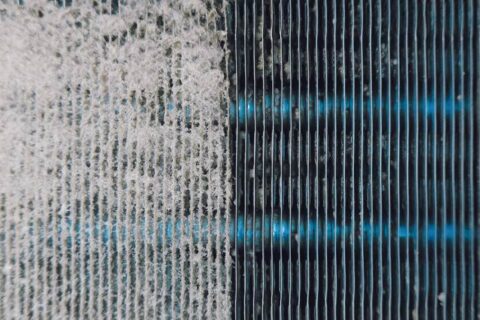What Could Be Polluting the Air in Your Home?
 If you’re like most homeowners, you probably don’t think much about your home’s air quality. You keep a fairly clean house, change your air filters regularly, and trust that your air is about as clean as it should be. But what if it isn’t? Is there something polluting the air in your home, and you’re not even aware that it’s happening?
If you’re like most homeowners, you probably don’t think much about your home’s air quality. You keep a fairly clean house, change your air filters regularly, and trust that your air is about as clean as it should be. But what if it isn’t? Is there something polluting the air in your home, and you’re not even aware that it’s happening?
How do you know if your home air quality isn’t great? For one thing, your health might begin to suffer. Pollutants in the air can trigger asthma and allergies, but they can also cause issues like headaches, eye irritation, and fatigue. Some indoor air pollutants can even cause serious, long-term health complications, including cancer. Even if you have not yet begun to experience ill-effects from pollutants in the air inside your home, you may notice a musty smell, a dank feeling to the air, moisture on the windows or walls, or moldy areas. These are also signs that the air in your home is not all it could be.
Your home’s air quality can be negatively impacted by a variety of pollutants.
- Radon can enter your home through cracks and openings in the walls and floors. A radioactive gas formed in the soil, radon is the top cause of lung cancer among non-smokers. In fact, it’s the second leading cause of lung cancer in general.
- Secondhand smoke is a completely preventable pollutant. It comes from burning tobacco products and can cause serious respiratory illnesses and even cancer. It’s especially hard on children, and can cause not only asthma and ear infections, but has also been linked to Sudden Infant Death Syndrome (SIDS).
- Combustion pollutants come from burning materials inside the home. The primary source of these pollutants is improperly vented fuel-burning appliances like space heaters, wood stoves, gas stoves, dryers, fireplaces, and water heaters. Combustion pollutants are dangerous, and include carbon monoxide and nitrogen dioxide, both of which are colorless and odorless.
- Volatile organic compounds (VOCs) come from products commonly used in homes. VOCs are emitted by paints and lacquers, paint strippers, varnishes, and waxes, cleaning supplies, pesticides, moth repellents, air fresheners, dry-cleaned clothing, office equipment, and even building materials and furnishings. When these products are used or sometimes even present, VOCs evaporate into the air and cause irritation to the eyes, nose, and throat. They also cause headaches, nausea, and liver, kidney, and central nervous system damage. Some VOCs can even cause cancer.
- Many different pollutants can trigger asthma. Mold, dust mites, and pet dander are just a few common examples. These things can cause symptoms like coughing, chest tightness, wheezing, and breathing problems for those with asthma.
- Mold sends spores into the air. If you’ve got mold in your home, the spores float through the air, land on damp surfaces, and then grow. When you inhale or touch mold, it can cause symptoms like sneezing, runny nose, red eyes, and skin rashes, as well as asthma attacks.
If you suspect that any of these things could be polluting your home, there are some steps you can take to remedy the situation. Often, it costs little to nothing to improve the air quality in your home and reduce the risks to your family’s health.
- First, take control of the sources of indoor air pollution. Opening windows and doors when the weather permits is one way to bring fresh air indoors, and running the air conditioner with the vent control open is another. Use bathroom and kitchen fans to help remove pollutants from the air, and make your home a no-smoking zone. When you use cleaning products, paints, and varnishes, and fuel-powered appliances, be sure to follow the manufacturers’ instructions, and always ventilate. Take measures to reduce mold and dust mites, keeping your house clean and dusted, cleaning up moisture immediately, and fixing leaks promptly. Wash your sheets and blankets weekly, use allergen-proof mattress and pillow covers, and keep pets off furniture.
- Stay on top of your air filter maintenance. HVAC systems have filters designed to trap dust and other pollutants, but they can become clogged if neglected. Change or clean them regularly, following the instructions that came with the filter.
- Mind the humidity. Keeping your indoor humidity between 30 and 50 percent will help decrease the likelihood of mold growth inside your home. Use a humidity gauge to keep an eye on it, and use a humidifier to increase humidity if necessary. To decrease humidity, open the windows, turn on the air conditioner, or use a dehumidifier.
- Pay attention to what’s in your air. Have your home tested for radon, and install a carbon monoxide detector. You might also consider purchasing an air quality monitor, which can detect the quality of air inside your house, checking for things like dust particles, allergens, VOCs, and humidity.
- Use good practices when making improvements. If you’re having a house built, make sure your builder is aware of the construction practices and technologies necessary to decrease the risk of poor indoor air quality. If you’re renovating an older home, take care to minimize air pollution, whether from new materials you’re introducing into your indoor environment or from disturbing materials that already exist inside your home. Pay attention to signs of inadequate ventilation, which include stuffy air, condensation on cold surfaces, or patches of mold or mildew.
- Know when to call in a professional. If you’ve tried to improve the air quality of your home and can’t seem to get control of it, you may need to enlist the help of a company with experience in this area.
If the air quality in your home needs improvement, Budget Waterproofing has the solution: the EZ Breathe ventilation system. EZ Breathe replaces contaminated air with fresh air seven to ten times a day, dramatically improving air quality and eliminating odors, mold and mildew, rot, bacteria, and other potentially harmful substances, and reducing the risk of asthma and allergies. EZ Breathe also reduces moisture in tour home, basement, and crawl space, improving your air quality and protecting your property and health.
At Budget Waterproofing, we’ve got more than 55 years of experience servicing both commercial and residential customers throughout Maryland. We’re proud of our craftsmanship and confident in our skills, and all of our technicians are fully licensed, insured, and bonded. For more information, call 410.690.4970 or contact us through our website.


